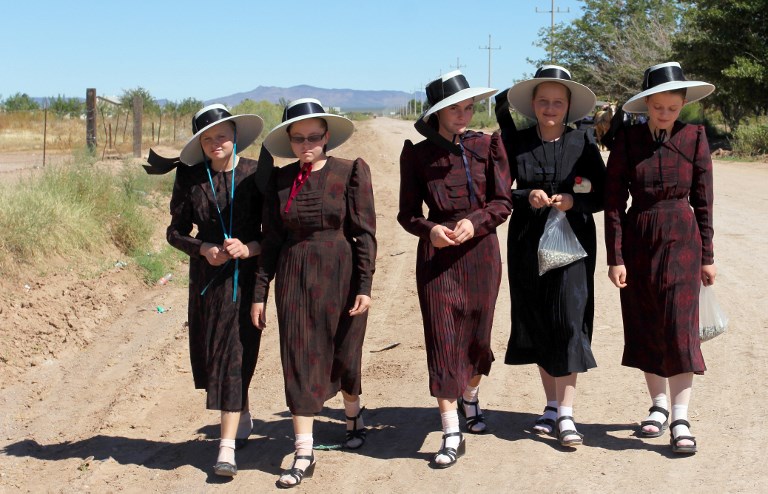
Amish people are a considered a mysterious group by many. Reclusive and secretive, they are known for the old-timey lifestyle, being able to build a barn in a single day, and making furniture. If they are sited, it is usually by taking an old-fashioned horse-drawn carriage into town for a farmer’s market or similar event.
Mennonites, for those who are aware of them, are generally lumped in with Amish as the same. Many people automatically assume that Mennonites are Amish are the same. After all, they wear similar clothes and share similar beliefs, so common sense would tell you that they’re same. While they do have some common characteristics, there are notable differences between the two that can’t be ignored. Keep reading and we’ll take a closer look at some of the similarities and differences between the Mennonites and Amish.

Amish culture dates back to the Protestant Reformation in the sixteenth century. The evolved out of the Anabaptist movement, which was a practice of baptizing adults who had previously been baptized as infants, a practice that would later lead in part to the Baptist faith. After over a century of such persecution, a new leader arose in the Swiss sect of Anabaptists. His name was Jakob Ammann, and his followers became known as Amish. It was under his reform efforts of the Anabaptist movement in 1693 that the Amish and Mennonites would form their distinct faiths.
Amish vs Mennonites – What’s The Difference?
Amman, in order to breathe new life into the Anabaptist movement, “proposed holding communion twice a year rather than once, as was the typical Swiss practice. He also suggested that Christians, in obedience to Christ, should wash one another’s feet in the communion service. To promote doctrinal purity and spiritual discipline, Ammann forbade the trimming of beards and the wearing of fashionable dress.”

The differences between Amish and Mennonites are largely matters of doctrine and its expression within their communities, which is why it might be difficult for outsiders to tell the difference. As stated above, both the Amish and Mennonites share similar Christian beliefs that spawned during the Anabaptism movement of the 16th century. However, the main differences sparked once Ammann took over and became leader of the Amish. In short, he expressed the importance of focusing on God and religion and not the outside the world. Through his teachings, strict codes and guidelines for Amish communities were developed. Some of the rules limited or prohibited the use of technology, placed boundaries on what Amish residents could wear, and they allowed for shunning under certain circumstances.
The Mennonites, on the other hand, never adopted the strict beliefs and practices instilled by Jacob Ammann. While they still shared similar views on Christianity, they didn’t feel the need to withdrawal from society like their Amish counterpart. Instead, they continued to use cars, phones, television and all the commodities that come with modern-day living. The “dress code” associated with Mennonites can be somewhat confusing, as you oftentimes see them wearing both modern-day clothes and old-fashion attire like the Amish. It really depends on the specific community and what kind of rules they set forth for their residents.

The Amish, generally, are much more reclusive and insular than Mennonites. They are also much more likely to eschew modern technology, though allowances can be made depending on circumstances. How services, or rather, where services, are held, is also another major difference between the two sects. As noted here, “Most Mennonites meet for their church services in meeting houses. The Amish, however, retain the practice of meeting in their homes, shops or barns for their Sunday services. Most Amish still use the German or the common dialect of German, Pennsylvania Dutch, as the primary language of the church services. Most Mennonites use English, and some of their services use modern practices such as worship teams and audiovisual tools in their services.”
The system affects the size of both communities. Amish communities tend to adhere to a close-knit group of thirty homes. If the group gets larger, it branches out to form a new group. The Mennonites don’t normally have this system. Instead, they focus more on missionary work and outreach in a similar manner to Protestant missionaries. This is of course another major difference from the Amish, who tend to only venture beyond their villages for commercial reasons.
Thus, the main differences between the two groups are largely doctrinal and dependent on the allowances permitted in any given community. Amish as a rule eschew modern vehicles, while Mennonites do not. At the farmer’s market you might see an Amish merchant using a cell phone for easy transactions, and Mennonites are more likely to go out into the world on a regular basis to perform missionary work. There other, more nuanced differences of course, but the basis differences are what most people will notice. Oh, and the Amish don’t pay social security.

Beyond the superficial, the main separation is one of doctrinal practices dating back hundreds of years, which, as it is considered a private matter, is probably why most people can’t tell the difference. As a final bit of trivia related to how Mennonites are more likely to strike out into the world than the Amish, Dwight D. Eisenhower, 34th president of the United States, was raised Mennonite due to his mother’s lineage.
Hopefully after reading this you’ll have a better understanding on some of the differences between the Amish and Mennonites. The truth is that they really share more similarities than differences, as they come from the same Anabaptist movement. With that said, the differences are quite apparent once you see pictures of how the two groups live.
